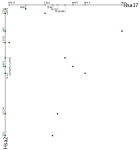The Synteny Database is a system built to detect conserved synteny -- the tendency of
neighboring genes to retain their relative positions and orders on chromosomes over
evolutionary time (synteny: syn, same; tene, thread).
Given a source genome and an outgroup genome the Synteny Database can detect regions of
conserved synteny within the source genome (paralogons), or between the source and
outgroup genomes. The system was built with special care to detect paralogons
originating from whole-genome duplication. The Synteny Database is meant to aid the
study of the evolutionary history of gene families across multiple lineages.
If you are new to the Synteny Database, or have questions, you might start by reading our
FAQ.
Please cite the following article if you use the Synteny Database or its associated tools:
J.M. Catchen, J.S. Conery, and J.H. Postlethwait. (2009) Automated identification of
conserved synteny after whole genome duplication. Genome Research,
19: 1497-1505.
[reprint]
Notices:
Xiphoporus maculatus data is now available; spotted gar and coelacanth are now
available as an outgroup to all teleosts.
The Synteny DB recently experienced a disk failure and has been moved to a
new machine (with a new name!). The data set has been updated to
Ensembl version 70. For a list of all reference genomes in the Synteny DB, read the
FAQ.
 What is the Synteny Database?
What is the Synteny Database?

